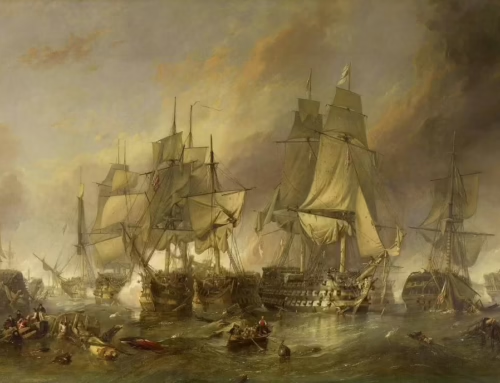Yesterday, 22nd July 2025, marks 727 years since the Battle of Falkirk—where one of Scotland’s most iconic defensive stands was shattered not by numbers, but by system failure. What can we still learn from it?
A Shattered Formation
The Scottish army at Falkirk was not weak. It was not cowardly. And it was not inexperienced.
William Wallace, a guerrilla leader turned Guardian of Scotland, had crafted a force based around the schiltron, a dense, circular hedge of spears designed to blunt cavalry. It had worked spectacularly at Stirling Bridge a year earlier, where English knights charged straight into disaster.
But Falkirk was different. On 22nd July 1298, Edward I brought not just knights, but a well-integrated army: longbowmen, heavy cavalry, and infantry who knew their roles within a cohesive system.
The schiltrons held for a time. But they were static. Vulnerable. And once the English longbowmen found their rhythm, the Scottish defence couldn’t manoeuvre, couldn’t counterattack, couldn’t adapt. Under a withering arrow storm, cohesion collapsed, and the schiltrons were broken.
The lesson? A strong position means nothing if it cannot flex under pressure. Defence without initiative is merely delay.
Coordinated Arms, Coordinated Training
Edward’s army wasn’t invincible. It was logistically overstretched, half-starved, and nearly mutinous. However, it did have a basic system of integration. Cavalry drew out and screened targets. Archers suppressed. Infantry followed through.
By contrast, Wallace’s forces had courage but lacked cohesion in training. Each component of his force: spearmen, light infantry, and archers, fought primarily in isolation. There was no mechanism for joint action, no structure for recovery once under duress, and no operational rehearsal of how to react if the line were to buckle.
Wallace didn’t lose Falkirk because his troops lacked bravery. He lost it because they lacked flexibility, and that is a training issue.
Falkirk and Today’s Synthetic Training Imperative
Modern militaries and law enforcement teams face threats just as asymmetric as Wallace did, from dispersed urban actors, hybrid forces, and unpredictable escalations. Yet we still see units trained in silos. Weapons proficiency here. Decision-making there. Team tactics somewhere else. Rarely integrated and seldom rehearsed under pressure.
This is where synthetic environments come in.
Systems like BattleVR or Archer are designed not just to simulate events, but to force coordination, test breakdowns, and build real-time adaptability. They expose teams to stress points, collapse conditions, and unknowns. You can simulate the Falkirk scenario—static defence vs. mobile threat and watch how your trainees respond.
Because unlike Wallace, modern leaders can rehearse the collapse before it happens.
Final Thought: It’s Not Enough to “Hold”
If Falkirk teaches anything, it’s that rigidity invites destruction. Tactics must evolve. But more importantly, so must the training frameworks behind them.
Wallace fought bravely. But Edward’s forces trained collectively.
One built a wall.
The other built a system.
Only one survived contact.
🧠 Are your units trained to adapt, or to stand?
- Explore integrated simulation with BattleVR and Hawk
- Download our multi-role synthetic training whitepaper
- Or book a Falkirk Scenario Simulation with your training team.





